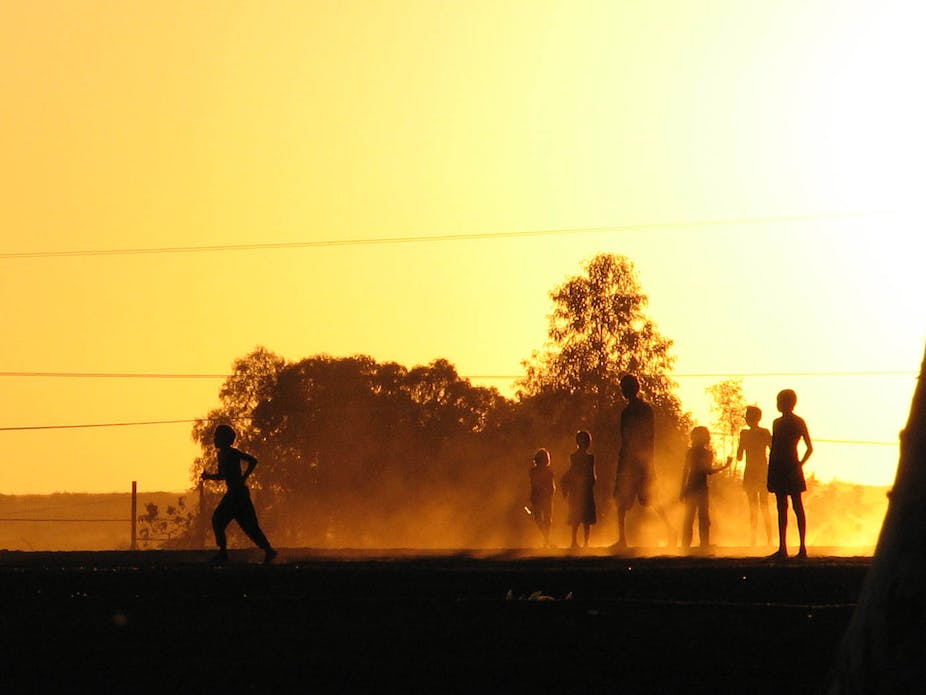Northern Australia is by no means exempt from the constant buzz around governance which has been a feature of Australian public life for the last decade. That’s particularly so in the area of Indigenous governance. We also hear a great deal about governance when it comes to “developing the north”.
And so we, in our small northern universities, find ourselves forming partnerships with all levels of government, industry, civil society organisations, Aboriginal organisations, and natural resource managers. As a result, we have become deeply implicated in the current government project of devolving responsibilities for service provision to individuals and communities.
Coming together by Skype and phone once a month over lunch, we share insights and puzzles around our work in governance research.
We pause to ask how we have found ourselves on this bewildering trajectory. Why? Because it seems that the “good governance agenda” is a by-product of global neoliberalising agendas that involve the disinvestment of governments in service delivery, and the promotion of markets.
Good governance and Indigenous policy
In Indigenous Australia, this might be seen historically as part of the gradual shift in government policy away from self-determination and reconciliation in the 1980s and 1990s. It has moved towards the contemporary “normalisation” of Aboriginal people through policy. Governments now exert themselves to induce civil society to take more responsibility for the work they have traditionally undertaken.
For this work, and especially for Aboriginal individuals and groups to be successful as “normal” citizens and corporations, they need to understand and implement “good governance”. And so good governance has currency in contemporary discourse and the regimes of development and training.
What about traditional governance practices?
Aboriginal people, of course, are confident of their good traditional governance practices. In many contexts these are largely unaffected by western governments. And in our experience, they remain insistent that their traditional practices are relevant to contemporary Australian life in the contexts in which they find themselves.
Governments, at all levels, are equally confident in the probity and necessity of their own governance practices. It’s where western and Aboriginal practices clash or sit uneasily with each other that the delivery of governance and leadership training is often called for.
In these contexts there is a fundamental incommensurability which top-down corporate governance and leadership training does little to alleviate. Working on a wide range of projects from land and sea management to indigenous housing in Northern Australia, we find that we have in common a need to grapple with the growing insistence of good governance. So we focus on opportunities to work creatively together to design “good-enough” governance structures and practices in particular contexts, rather than to deliver or enforce it.
For us, the challenge is to recognise the significance of the co-emergence of Indigenous governance practices, and state governance practices designed to promote markets in services.
It is their co-constituting mutualities — keeping separate and connecting up well enough, that matters. It’s what we must address if we are to work together in good faith – Indigenous Australia, academic researchers, civil society, industry and governments. We struggle to understand how their changing governmentalities affect our work as theorists and researchers, and our work involves massaging and explicating on both sides of the divide.
Research in an era of ‘good governance’?
Sometimes our research is oriented around service delivery as much as it is oriented around research and knowledge production. It may involve operating with the authority of the academy – while also facilitating others to generate partnerships and forms of collaboration. And it may require us to evaluate the efficacy of partnerships at the same time as we are involved in brokering and supporting these same partnerships.
In other words, as researchers, we are involved in doing governance in our projects at the same time as we are researching what governance in particular situations might be, or might become.
Much of this work is very local and specific, negotiating for example, good-enough practices for decision making around the constitution of a new remote Aboriginal corporation.
We might work to negotiate good practices for integrating traditional governance into the management of remote housing projects, or to co-design a digital tool that will help Aboriginal patients make informed decisions about treatment between their Aboriginal bodies and their biomedical diagnoses, or to develop accountable practices with cultural authorities and industry for a remote aquaculture project.
Policies can be changed from the ground up, if localised successful practices are negotiated, made visible and supported within the flexible workings of governments, civil society, industry, ancestral authority and the machinations of a university.
Noticing and connecting these localised successes reverberates upwards to change policies and practices. Documenting how this happens is part of our work.
“Indigenous governance” is a sign of something that is happening to all of us – and to understand it and ourselves as emerging from more fundamental changes may be key to more generative research collaborations.
While I’m listed as the author of this piece, I’d like to point out it’s the work of a group of researchers from the Northern Institute and other researchers at Charles Darwin University, and the Northern Futures Collaborative Research Network. You can read more about the group here.

